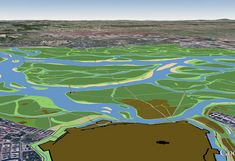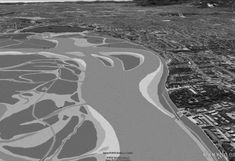ENVIEDAN Environmental history of the Viennese Danube 1500 – 1890: Understanding long-term dynamics, patterns and side-effects of the colonization of rivers
ENVIEDAN is the first integrated, interdisciplinary environmental history of the Viennese Danube from early modern times to the turn of the 19th to the 20th century. The project investigates the relation between the river and the city. It focuses on the changing role of the Danube from 1500 to 1890, on the functions of the river for the city and its surroundings. It analyses the interventions Viennese authorities and organisations undertook to secure these functions and to protect humans and infrastructures from the river’s threats and asks for the long-term legacies of these human interventions into the riverine landscape. Finally it traces the links between centre and periphery by observing the effects of urban development on selected regions along the Danube.
The project breaks new ground as it broadens our knowledge of the role of rivers for an urban society in the time before and during industrialisation. It aims to widen the temporal scope of existing approaches to study e.g. energy supply, land use or river morphology by systematically assembling historical sources from the 16th century onwards and making them available for the study of the river’s role in urban development.
ENVIEDAN is funded by the Austrian Science Fund FWF
Project number: P 22265-G18
Project leader: Univ. Prof. Ing. Dr.phil. Verena Winiwarter
Alpen-Adria-Universität Klagenfurt-Graz-Wien verena.winiwarter(at)uni-klu.ac.at
Changing Danube river landscape in Vienna 1529 - 2010 (YouTube Video).




